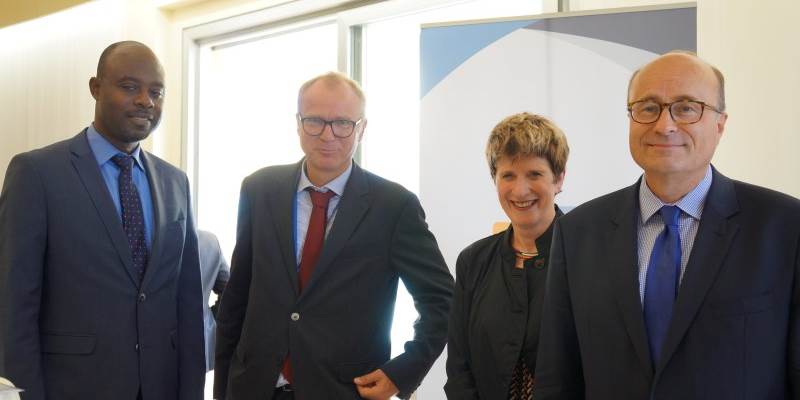At the primary stage, the report discusses several ideas and avenues to strengthen states’ resilience building and delivery of technical assistance to implement their human rights obligations and commitments. As a second stage of prevention, the report discusses ways to enhance early consideration, action and engagement, and the development of mechanisms tailored to prevention of human rights violations.
Ambassador Valentin Zellweger, Permanent Representative of Switzerland, introduced the report and gave some insights from the discussions during the Glion Human Rights Dialogue held on 18-19 May 2017. Ambassador Yackoley Wokou Johnson, Permanent Representative of Togo, held a presentation on the positive experiences Togo had with technical assistance and how it had helped Togo in implementing their human rights obligations.
Ms Kate Gilmore, Deputy High Commissioner for Human Rights, spoke highly of the report as an important contribution. She stated that the human rights community started this decade of with an optimism, and the view that conflict is on the decline. However, since then something “has gone terribly wrong”.
As prevention is rooted deeply in accountability, the Glion Dialogue is not only welcome, but an opportunity for empowerment and hope, and a generator of possibilities. The Human Rights Council (HRC) has an indispensable role to play – to speak the unspeakable and confront the things no other bodies do. This is one of the core values of the HRC.
DHC Gilmore praised the work of Norway and Switzerland, and emphasized the importance of building on the framework made by the Glion Dialogue.
Ambassador Hans Brattskar, Permanent Representative of Norway, pointed out that as the Secretary-General of the UN has made prevention a top priority, the HRC should follow suit. From every dollar spent on risk reduction, five to ten times the amount is saved on responding. Similar returns could probably be found in prevention of human rights violations. The Glion Dialogue was the first phase in this important debate. It must now be brought back to the HRC.
The launch ended with a presentation by Ambassador Brattskar of a draft joint statement. This launches a new discussion on how to operationalize the Council’s mandate in an inclusive and cooperative manner. The statement involves two parts. The first part focuses on prevention of violations at ‘root-causes’ level. The second part focuses on the tools and resources available to the High Commissioner, and how the HRC can better turn early warning information into early action. It emphasizes that the space for civil society in the HRC must be fully safeguarded. A new-mindset, new ways, and potentially new tools for prevention must be developed.
More about the Glion Dialogue here
The full Glion IV report is available here
